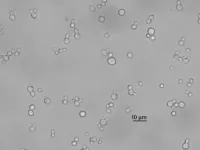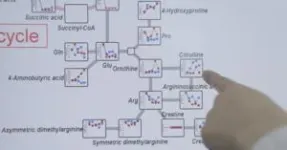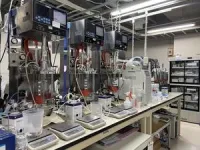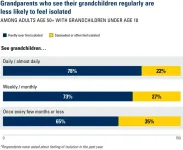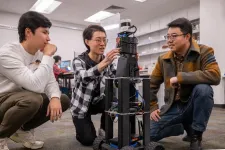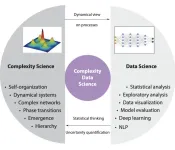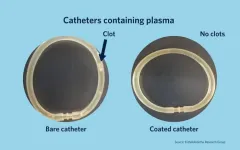(Press-News.org) Herbal medicine is difficult to produce on an industrial scale. A team of Kobe University bioengineers manipulated the cellular machinery in a species of yeast so that one such molecule can now be produced in a fermenter at unprecedented concentrations. The achievement also points the way to the microbial production of other plant-derived compounds.
Herbal medicinal products offer many beneficial health effects, but they are often unsuitable for mass production. One example is artepillin C, which has antimicrobial, anti-inflammatory, antioxidant, and anticancer action, but is only available as a bee culture product. The Kobe University bioengineer HASUNUMA Tomohisa says: “To obtain a high-yield and low-cost supply, it is desirable to produce it in bioengineered microorganisms which can be grown in fermenters.” This, however, comes with its own technical challenges.
To begin with, one needs to identify the enzyme, the molecular machine, the plant uses to manufacture a specific product. “The plant enzyme that’s key to artepillin C production had only recently been discovered by YAZAKI Kazufumi at Kyoto University. He asked us whether we can use it to produce the compound in microorganisms due to our experience with microbial production,” says Hasunuma. The team then tried to introduce the gene coding for the enzyme into the yeast Komagataella phaffii, which compared to brewer’s yeast is better able to produce components for this class of chemicals, can be grown at higher cell densities, and does not produce alcohol, which limits cell growth.
In the journal ACS Synthetic Biology, they now report that their bioengineered yeast produced ten times as much artepillin C as could be achieved before. They accomplished this feat by carefully tuning key steps along the molecular production line of artepillin C. Hasunuma adds: “Another interesting aspect is that artepillin C is not excreted into the growth medium readily and tends to accumulate inside the cell. It was therefore necessary to grow the yeast cells in our fermenters to high densities, which we achieved by removing some of the mutations introduced for technical reasons but that stand in the way of the organism’s dense growth.”
The Kobe University bioengineer already has ideas how to further improve the production. One approach will be to further raise the efficiency of the final and critical chemical step by modifying the responsible enzyme or by increasing the pool of precursor chemicals. Another approach may be to find a way of transporting artepillin C out of the cell. “If we can modify a transporter, a molecular structure that transports chemicals in and out of cells, such that it exports the product into the medium while keeping the precursors in the cell, we could achieve even higher yields,” Hasunuma says.
The implications of this study, however, go beyond the production of this particular compound. Hasunuma explains, “Since thousands of compounds with a very similar chemical structure exist naturally, there is the very real possibility that the knowledge gained from the production of artepillin C can be applied to the microbial production of other plant-derived compounds.”
This research was funded by the Japan Society for the Promotion of Science (grant 23H04967), the RIKEN Cluster for Science, Technology and Innovation Hub and the Japan Science and Technology Agency (grant JPMJGX23B4). It was conducted in collaboration with researchers from Kyoto University and the RIKEN Center for Sustainable Resource Science.
Kobe University is a national university with roots dating back to the Kobe Commercial School founded in 1902. It is now one of Japan’s leading comprehensive research universities with nearly 16,000 students and nearly 1,700 faculty in 10 faculties and schools and 15 graduate schools. Combining the social and natural sciences to cultivate leaders with an interdisciplinary perspective, Kobe University creates knowledge and fosters innovation to address society’s challenges.
END
Bioengineered yeast mass produces herbal medicine
2024-11-12
ELSE PRESS RELEASES FROM THIS DATE:
Reporting into the void: Research validates victims' doubts about response to phishing reports
2024-11-12
The cybersecurity refrain when encountering phishing emails invariably advises: “don’t click on that link” and “report that email” — but new research from Drexel University and Arizona State University has revealed a problematic reality: Most major companies do little to support reporting and few take action to shut down phishing sites disguised as their own after they have been reported.
Recently presented at the International Symposium on Research in Attacks, Intrusions and ...
Decoding Deception: The Psychology of Combating Misinformation
2024-11-12
Decoding Deception: The Psychology of Combating Misinformation, a short film produced by Proceedings of the National Academy of Sciences with support from the Pulitzer Center, addresses one of the most pressing issues of our time: the quest to stem the swelling tide of misinformation.
Decoding Deception explores potential remedies to this growing societal problem. While social media acts as an accelerant for the rampant spread of misinformation on climate change, public health, and politics, the rise of generative AI risks worsening the problem. Left unchecked, disinformation and misinformation can inflict lasting damage on people, institutions, and society ...
Plant green-up and herbivory in Greenland
2024-11-12
A study links herbivory to phenology in the Arctic. Phenology is the study of the timing of events in the natural world. In recent decades, researchers have investigated how climate change is shifting many natural events. Eric Post and colleagues wanted to understand how a different variable—the presence or absence of herbivores—affects the timing of spring plant growth, or green-up, in Greenland. In an experiment lasting nine years, the authors excluded musk oxen and caribou from some areas, then compared the timing of the spring green-up of 9 tundra plant species in the areas with and without herbivores. Of the plants that showed altered green-up between the conditions, about ...
Grandparents help grandkids in many ways – but the reverse may be true too, poll suggests
2024-11-12
As many Americans prepare to gather with their families for the holidays, a new poll shows the importance of grandchildren in grandparents’ lives.
The poll also suggests that having grandchildren and seeing them regularly may have a link to older adults’ mental health and risk of loneliness.
Although the poll can’t show cause and effect, the findings suggest a need to study the role of grandparenting in older adults’ lives, as part of a broader effort to address social isolation.
At ...
Giving robots superhuman vision using radio signals
2024-11-12
In the race to develop robust perception systems for robots, one persistent challenge has been operating in bad weather and harsh conditions. For example, traditional, light-based vision sensors such as cameras or LiDAR (Light Detection And Ranging) fail in heavy smoke and fog.
However, nature has shown that vision doesn't have to be constrained by light’s limitations — many organisms have evolved ways to perceive their environment without relying on light. Bats navigate using the echoes of sound waves, while sharks hunt by sensing electrical fields from their prey's movements.
Radio waves, whose wavelengths are orders of magnitude ...
Digital twins and complexity data science
2024-11-12
A Perspective suggests that “digital twins” are not simply tools for science but are an example of the integration of complexity science and data science into a new scientific field. A “digital twin” is a digital representation of a real-world object or system. The idea emerged from manufacturing but has been adopted by science, especially by the fields of medicine, immunology, and epidemiology. Digital twins are typically frequently or continuously updated and improved with real data from the real object the digital twin mirrors, allowing ...
‘Moonlighting’ enzymes can lead to new cancer therapies
2024-11-12
Researchers at the Centre for Genomic Regulation (CRG) reveal that metabolic enzymes known for their roles in energy production and nucleotide synthesis are taking on unexpected "second jobs" within the nucleus, orchestrating critical functions like cell division and DNA repair.
The discovery, reported across two separate research papers out today in Nature Communications, not only challenges longstanding biological paradigms in cellular biology but also opens new avenues for cancer therapies, particularly against aggressive tumours like triple-negative breast cancer (TNBC).
For decades, biology textbooks have neatly compartmentalised ...
One genomic test can diagnose nearly any infection
2024-11-12
Next-generation metagenomic sequencing test developed at UCSF proves its effectiveness in quickly diagnosing almost any kind of pathogen.
A genomic test developed at UC San Francisco to rapidly detect almost any kind of pathogen – virus, bacteria, fungus or parasite – has proved successful after a decade of use.
The test has the potential to vastly improve care for neurological infections that cause diseases like meningitis and encephalitis, as well as speed up the detection of new viral pandemic threats. It uses a powerful genomic sequencing ...
Blood vessel-like coating could make medical devices safer for patients
2024-11-12
University of B.C. researchers have developed a groundbreaking coating that could make medical devices safer for millions of patients, reducing the risks associated with blood clots and dangerous bleeding.
The new material, designed to mimic the natural behavior of blood vessels, could allow for safer use of blood-contacting devices like catheters, stents, blood-oxygenation machines and dialysis machines—especially in cases where blood clots are a significant concern.
“This discovery could be a transformative step in the development of safer medical devices,” said Dr. Jayachandran Kizhakkedathu, ...
Sleep is no light matter for bees
2024-11-12
In an emerging red flag for the digital era, sleep experts have warned us to avoid screen time in bed, sounding the alarm that light emitted from phones and other electronic devices can disrupt our sleep patterns. That’s one way that science is waking up to the broad range of health and disease implications related to circadian biology and our daily sleep-wake cycles.
Now, researchers at the University of California San Diego have found that light disruption is not only a health concern for humans. A new study led by PhD candidate Ashley Kim and Professor James Nieh in the School of Biological Sciences has found that artificial light disrupts the circadian rhythms of ...
